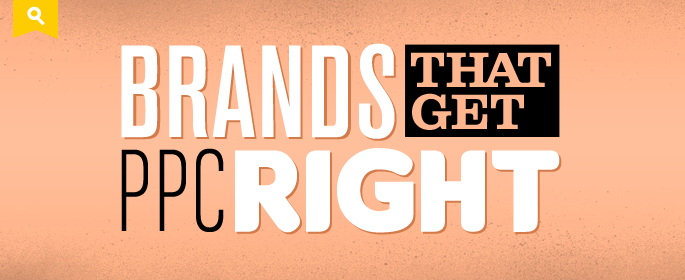
Not long ago, I called out a few PPC offenders among big brands and highlighted some of the silly mistakes we should all stop making. To follow up with a more positive note, I’ve decided to point out some advertisers who are doing PPC right.
With the proper thought behind a campaign, you can stand out from all the generic clutter in the paid ad space, whether in video, search results, or display placements. You can use PPC to not only get your brand seen, but maybe even loved.
Now, let’s take a look at what a few brands have done.
Video: Make Preroll Fun
Plenty of people love to hate on advertising in general, but if there’s one ad form that’s called out as being the most annoying, it’s preroll videos. People who want to watch wrestling kittens on YouTube can NOT stand to have to watch a 15 second ad first. They just want those adorable kittens. And who can blame them?
Understanding this web phenomenon, Burger King launched a campaign to capitalize on people’s general annoyance with preroll ads. They created 64 different ads customized to popular video topics people search for. Each ad featured a couple of guys sitting in Burger King complaining about how “this guy” (the viewer) was just trying to watch a video but had to sit through an ad instead. If you haven’t seen, well, you’re welcome:
While earning a few laughs, more importantly, Burger King is empathizing with common emotions toward advertising, as opposed to simply throwing ads in people’s face as a cold brand. “You hate preroll ads? Yeah, we do too.” Creating an emotional connection with your audience has been a goal of advertising long before the internet was ever invented. Nice to see Burger King doing it well, and in a way that will be remembered.
Display: Hate Remarketing?

To be fair, this ad for Hero Conf is targeted to PPC people by PPC people, but it’s one of the most creative takes on remarketing I’ve seen. Again, capitalizing on the stereotypical annoyance many people have with ads helps to get noticed. Of course, I’d argue that many complaints about remarketing stem from poorly managed campaigns, but that’s a topic for another article. The point here is that an ad like this makes you take a second look even if your eyes normally glaze over the ad space on sites. You spend time seeing the ad.
Search: Give ’em What They’re Looking for
Ad placements in search results can be a crowded place to vie for attention. I found a couple examples of advertisers going out of their way to meet the exact requests of searchers.

This first example shows a search for a camera lens. The phrase searched likely demonstrates being close to purchase, as the user has pretty specific details in mind and is probably comparing sellers. Best Buy’s ad is quite relevant by mentioning Nikon lenses, but note that B&H outshines by specifically mentioning every part of the user’s query: “Nikon 50mm Prime Lenses.” In addition, several ad extensions enhance visibility, even including a review extension, and B&H dominates the product listing ad section as well.

Upon clicking the ad, I’m taken to product listings for Nikon lenses with a 50mm prime showing up right on top. Everything about this ad serves to meet the needs of the searcher, who sees his or her search reflected precisely in the ad and does not have to do unnecessary filtering upon arriving at the page.
Now, let’s shift gears from photography to summer vacation. This time our searcher wants to find a place to rent in Maine.

Airbnb stands out as the clear winner here for more reasons than just showing up on top. While the other ads mention Maine in some way, Airbnb mentions the location in both title and main ad copy, while also including a specific starting price point. A 4-star rating, social extension, and sitelinks help to both establish the credibility of the company and enhance visibility.

Click the link, and you end up on a page showing Maine vacation rentals both on a map and in a column of listings, providing plenty of relevance to what our searcher was trying to find.
So what do these examples teach us that you can apply to your PPC ads, whether promoting a large or small brand?
- Create empathy with your audience. Just as Burger King showed they felt the pain of sitting through a preroll ad, identify with what your users feel, and don’t be the generic marketer throwing price points in their faces.
- Write ad copy as specific to your keywords as possible. This isn’t a newspaper ad. You know exactly what your searchers are looking for. Of course, this tactic assumes that you are also organizing ad groups around very similar keywords. For example, going back to our camera example, you wouldn’t want to bid on “canon lenses” and “nikon lenses” in the same ad group.
- Land users on the most relevant page possible, without making them do any unnecessary filtering. Say you’re running a clothing store campaign. If a user searches for “blue shirts,” and your ad copy says “Save 50% on Blue Shirts,” don’t land that person on a page showing shirts in every possible color. Make sure the destination URL leads to a page already filtered to only show blue shirts.
- Provide specific incentives to entice users to click. Benefits like free shipping, discounts, free trials, and large inventories help to make your ad stand out.
You’ve seen a few positive examples to follow. Now take some time to look at your campaigns and find where they may be in need of a refresh. Will your ads stand out from the clutter or just get ignored?







